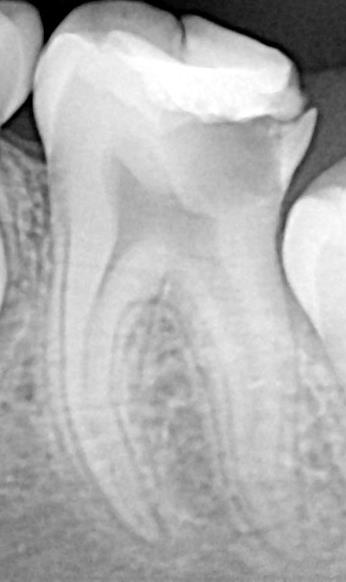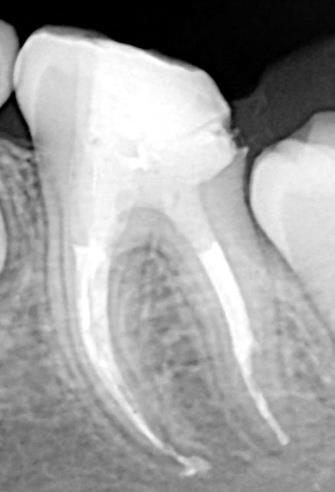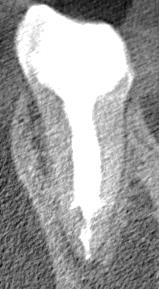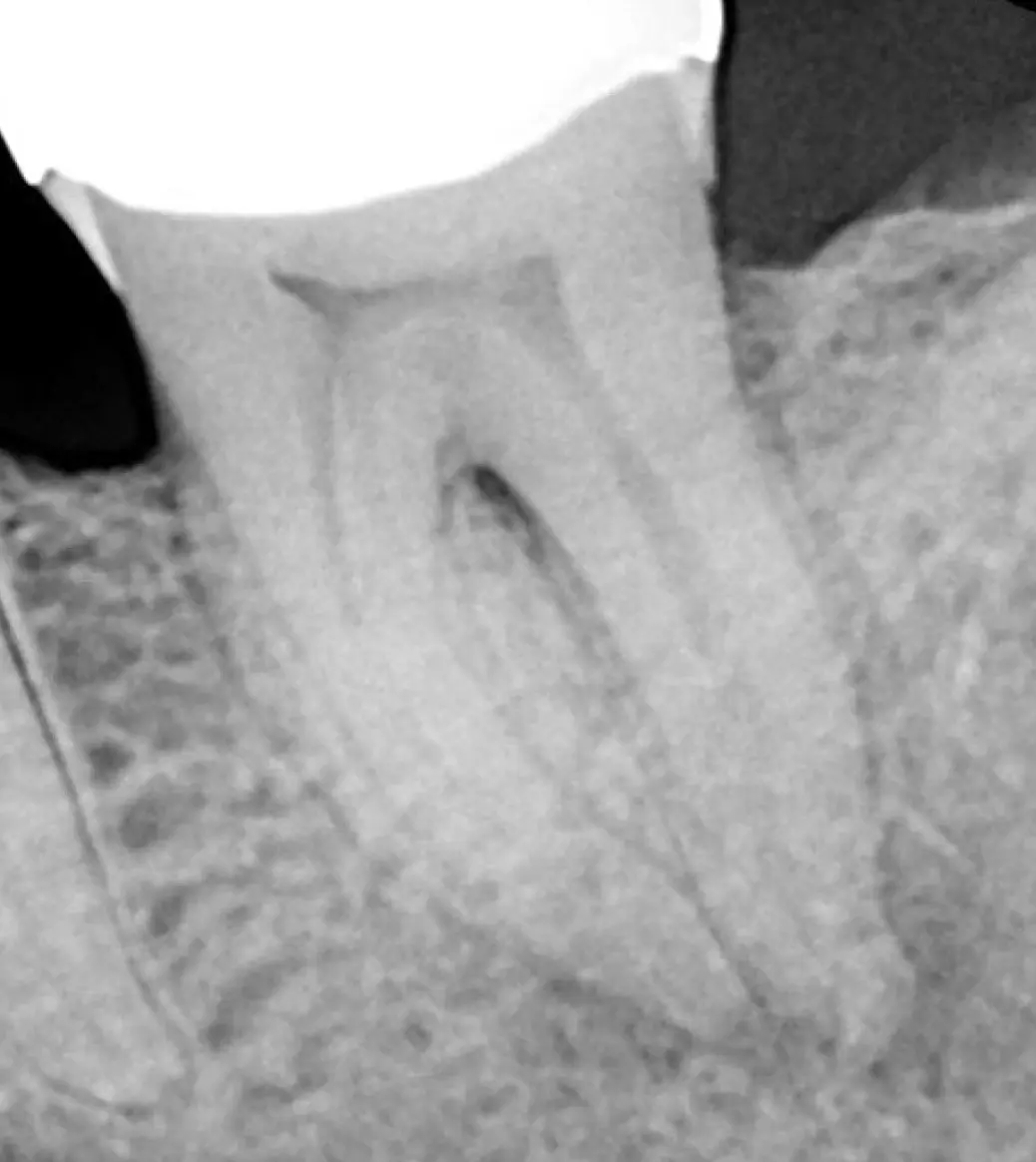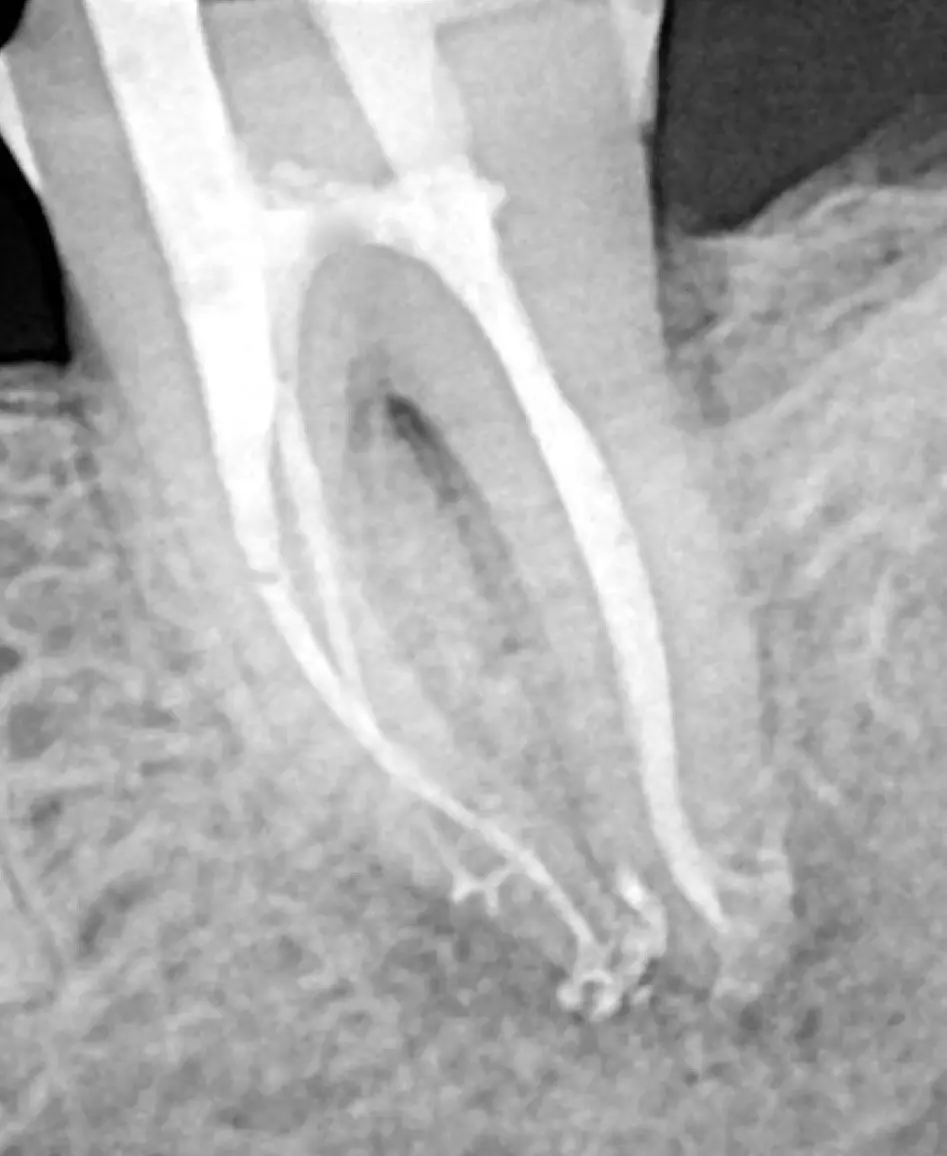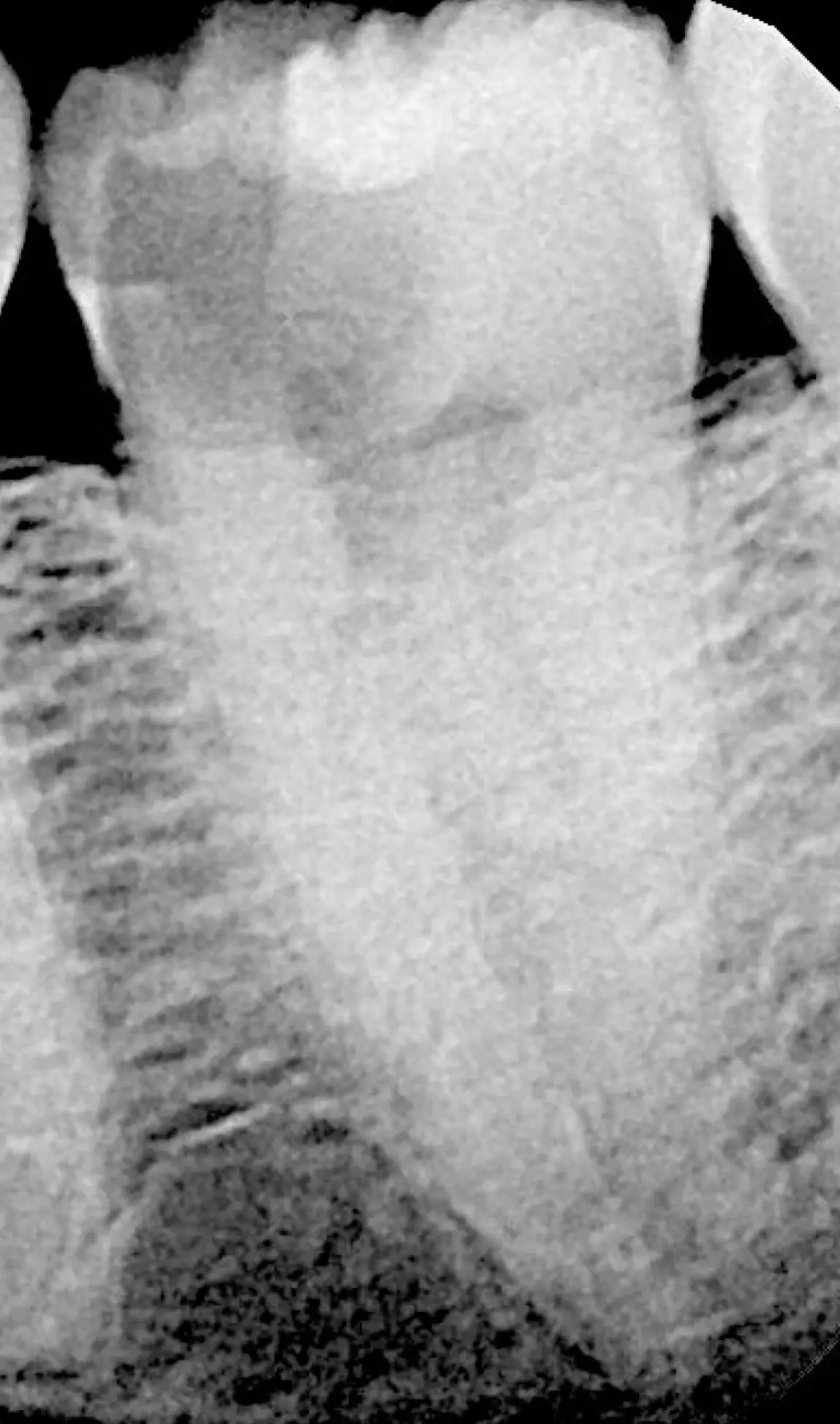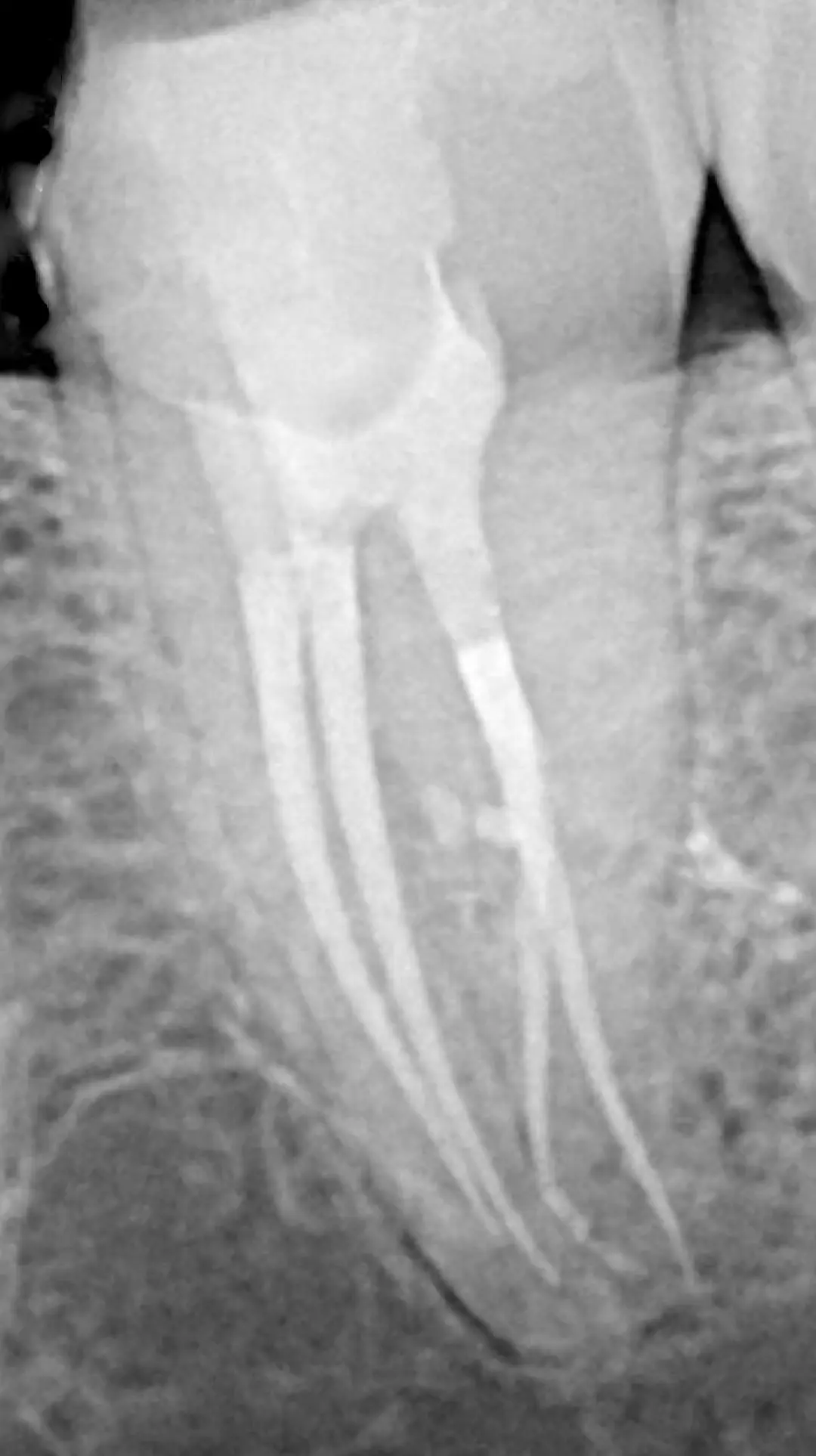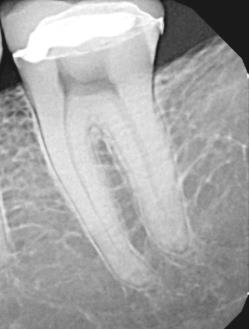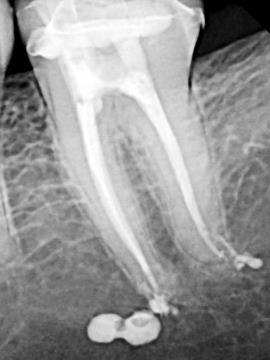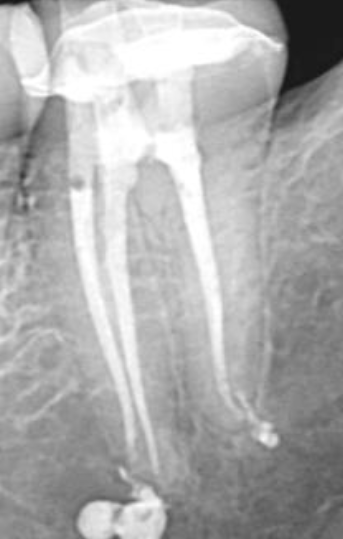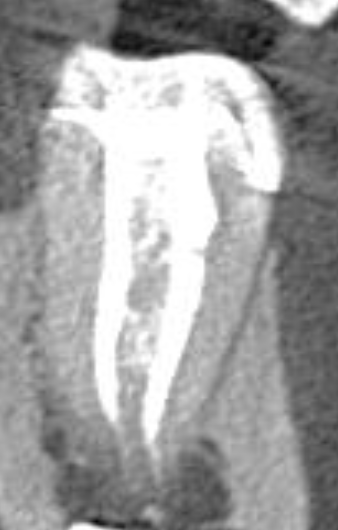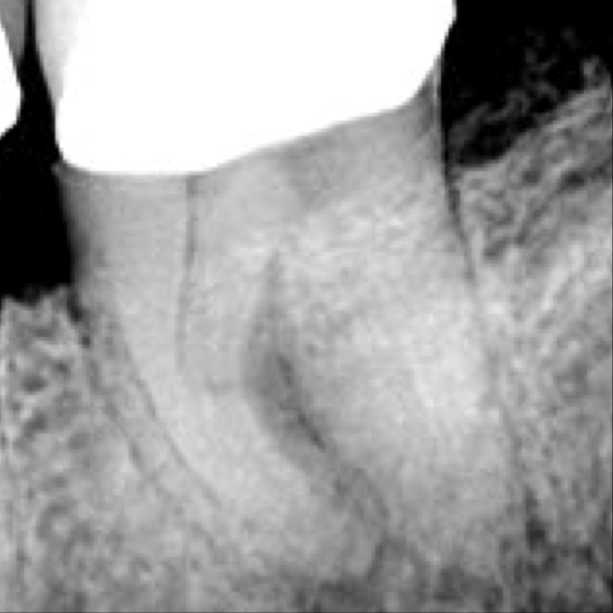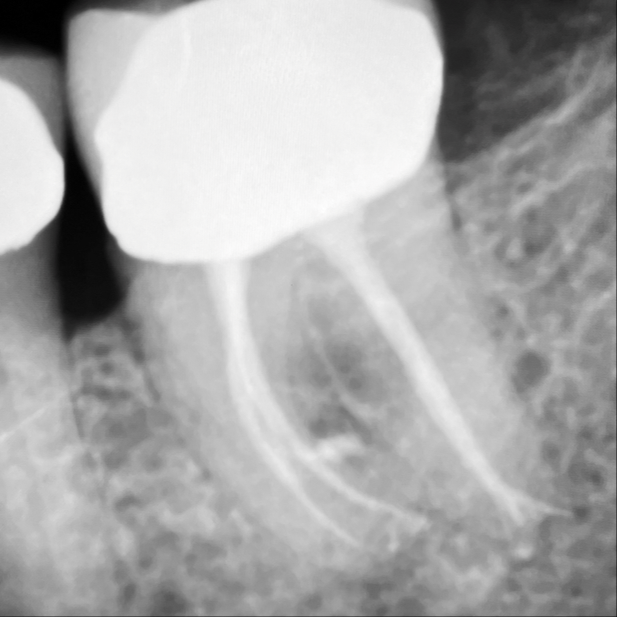Case 1:
Great example of combining a miniKUT MIE prep and the power of PulpSucker Irrigation. Mesial canals were instumented entirely with miniKUT EZP 15/.03 while distal canals that confluent apically were negotiated with miniKUT EZP 15/.03 and finished with miniKUT 25/.05. The PulpSucker was staged, catheterized, and irrigated with 100ml 8% NaOCl until the solution bag ran empty in about 15 minutes. Notice the Thrill of the 3D Fill.
CASE 2:
Interesting anatomy treated with MIE. A slotted access entry was cut for the mesial canals and a 1.5mm round opening for the distal canal, leaving a pulp chamber “truss” between them . The mesial canals were negotiated with a 15-.03 miniKUT EZP rotary negotiating file (with lube in the PC) as first file to length, both canals gauged @ a #15 KF (w 17% EDTA), finishing instrumentation for the case as no dentin was cut in the distal canal; the pulp there was broached intact and a prebent #15 KF patency file was used after to explore 3 apical POE’s beyond the D apical impediment. PulpSucker negative pressure irrigation was staged, catheterized, and I ran 100ml 8% NaOCl w surfactants through the tooth in about 12 mins. I used Vista Dental’s new Regen bio ceramic sealer with miniKUT 15-.03 GP cones fit in the mesial canals (short CW downpacks and single cone backfills), and the same sealer with a plastic core obturator to fill the distal canal due to the apical impediment. Impediments that are difficult/impossible to fit a cone around are best filled-IMO-with carrier-based obturation. One does not even need to measure them, just coat and blot the canal with sealer, take the carrier out of the oven and slam it against the impediment. Air abrasion was used to clean the access openings after which dual cure composite was used to close things up. I called the patient that night and was informed that the pt. hadn’t needed to take the Aleve we dispensed
CASE 3:
The story on this case is that the distal canal was uninstrumented, the mesial canals were negotiated with an miniKUT EZP file (note the severe S-curve of the MB canal), The two access cavities were micro-sized and PS easily went to place with very 3D irrigation results, the second image from the left shows lots of space next to the GP cone that was fit in the distal canal, so I used a carrier to fill it and there are at least three to four lateral canals shown post-op. The mesial root contained several lateral projections as well.
CASE 4:
Two MIE access cavities were cut, canal shaping was minimal, irrigation was done with the negative pressure PulpSucker System, and the canals were filled with GP and bioceramic sealer using the Continuous Wave Obturation technique. Note the rich isthmus anatomy between the mesial canals and the LC off the distal side of the distal canal. The surplus sealer is inconsequential as it is 100% biocompatible—half of these resorb in a month, the other half remain with healthy bone growth adjacent to their surfaces.
CASE 5:
Tooth #18. The PulpSucker cleaned and made available for filling challenging apical anatomy as well as a mid mesial lateral canal."


